What is cybernetics?
This article provides several ways of understanding cybernetics: first, specifying in a general sense what cybernetics is and isn't, then via some of the ways its practitioners have defined the trans-disciplinary discourse, and finally in the specifically common form that it takes in common cybernetics (c/cyb). Elsewhere I have written about some of the tools, concepts and models which emerge from the subject and may be helpful to substantiate both the practice of cybernetics and c/cyb specifically.
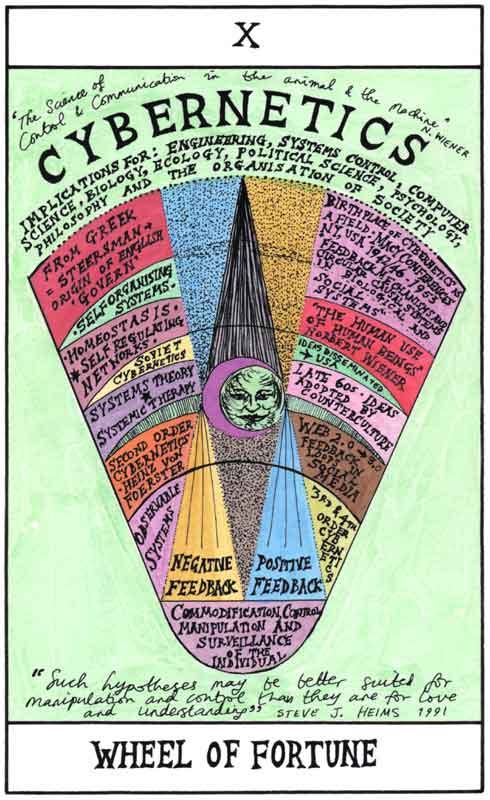
What cybernetics isn’t
First, it is worthwhile to dispel a few common misconceptions which often come to the minds of people hearing of cybernetics for the first time. Cybernetics is not simply an extension of the prefix cyber, which is popularly associated with anything remotely technological. Cybersecurity, cyberwar, cyberspace, cyberterrorism, cyberattacks, cybersex, and so on, while related to cybernetics to a greater or lesser extent, at their base have little to do with the subject from which their names are derived. Modern technologies, cyborgs and the internet are closely related to strands of cybernetics, and in some sense emerged from it, but the subject has as much to say about biological, social, economic and ecological systems as it does with the technological domain. In fact, the articulation of commonalities between all the diverse systems which make up our world - whether they be natural, artificial or a fusion of both - gets us to the heart of cybernetics.
Basic overview
Cybernetics has to do with the exploration of mechanisms shared in common within and among very complex systems of whatever kind (whether biological, ecological, environmental, computational, neurological, organisational, social and so on). The Macy Conferences are often considered to be the birthplace of cybernetics, where experts from a wide range of disciplines met to see what they could learn from one another about their specific subjects of enquiry from those in other fields.1 They soon came to realise that there were similar mechanisms which all their subjects held in common. In this sense, cybernetics studies the invariant features and dynamics of complex systems and brings into view the characteristics which they share in common.2 Examples of these shared structural mechanisms, such as feedback, recursion, homeostasis, ultra-stability, autopoiesis, etc;3 and laws held in common such as the law of requisite variety or the redundancy of potential command, are cybernetic mechanisms in the sense that they are shared among any and all exceedingly complex system, including those types mentioned above and whatever others might come to mind.

First and Second order cybernetics
Many of the initial Macy attendees varied in their disciplines of interest but shared a view of systems as things that could be coldly analysed and, with enough research and sufficiently finely tuned models, could have quite disinterested and objective conclusions drawn from them. These 'first-order’ cyberneticians saw themselves as outside observers looking in at the systems they analysed. In some disciplines (closer to mathematics, computer science, etc.) such an outsider perspective might be largely appropriate, but understanding the researcher as a disinterested observer becomes immediately problematic when the system in question is a social one. In such domains, it is inevitable that politics, bias and contingency become quickly inscribed in any human understanding of systems.4
Heinz von Foerster (observing the work and practices of his contemporaries) understood cyberneticians themselves to be a part of the system they investigated, unable to simply stand on the outside looking in since they were both a part of the systems they constructed, as well as holding responsibility for intervening in and having an influence upon them. Second-order cybernetics, as it became known, acknowledges the influence of the observer on the systems they investigate by accounting for the subjective and politicised nature of their projects. This led von Foerster to distinguish between, on the one hand “the science of observed systems” and on the other “the science of observing systems”, the latter of which seeks to acknowledge the cybernetician in the models they produce, thereby applying cybernetic reasoning to cybernetics itself.5
Two researchers described this process of self-evaluation by emphasising the need for groups of interlocutors to construct cybernetic models through a participatory process of self-critical discourse.
“The systems-approach “of the first generation” is inadequate for dealing with wicked problems. Approaches of the “second generation” should be based on a model of planning as an argumentative process in the course of which an image of the problem and of the solution emerges gradually among the participants, as a product of incessant judgement, subjected to critical argument” (RITTEL & WEBBER, 1973)
Second-order cybernetics is critical to approaching cybernetics in a social setting, and its self-referential orientation is an essential part of the difficult process of articulating an emancipatory conception of cybernetics, capable of perceiving its limitations and contingency as well as its potentialities.

Others definition
Despite the quite elementary definition of cybernetics outlined above, there are as many ways of defining the subject as there are practitioners of it, depending on the outlook, goals, and disciplinary position one begins from. To give a flavour of the variety of approaches to cybernetics we will consider a few of the definitions given by prominent cyberneticians coming from different perspectives.
Control & communication
Norbert Wiener defines cybernetics as:
"control and communication in the animal and the machine" (WIENER, 1948).
This is, most likely, the first definition the majority of people are exposed to, from the man often considered to be the originator of the subject. While the relationship between animals and machines is of vital importance (and acknowledges the important equivalence between artificial and natural systems from a cybernetic perspective), Wiener’s definition neglects to mention the many other types of complex systems of interest to cyberneticians. On the other hand, the categories of communication & control are helpful heuristics for beginning to think in cybernetic terms. Nevertheless, there is often a misunderstanding that cybernetics is concerned with control over systems, whereas it concerns control specifically within systems, which is to say the self-control of systems. While the concept of control in cybernetics is much maligned and misinterpreted, it is of central importance to understanding it. Vitally, conceiving of cybernetics in terms of its self-reinforcing nature: as the study of self-control, self-regulation, and self-organisations, is imperative, especially within a political and egalitarian context.

Information & messages
Other cyberneticians have variously defined cybernetics as:
"The study of systems that are open to energy but closed to information and control – systems that are information tight" (W.R. ASHBY).
"The science of informational structures in technical and non-technical domains" (STEINBUCH).
"The general theory of the transformation of information, and the theory and principles of building various transformers of information" (GLUSHKOV)
"The theory and technique of systems which transform messages" (FRANK).
These definitions show ways of understanding cybernetics which put the concepts of information and the transmission of messages at the forefront. Information, like cybernetics, is associated with many definitions depending on the context it is applied to, but among the thinkers mentioned above is likely to be associated with the definition applied within information theory, understood as the resolution of uncertainty which occurs during the interpretation of a message, represented in the form of bits.
Stafford Beer, extending Gregory Bateson's famous phrase, distinguished data from information, the former being understood as the mere representation of difference, while the latter is those differences which make a difference. Another notable characteristic of these definitions is their more technical and rigorous form, some of them coming from those working in engineering, computation and the like, or otherwise approaching their subjects with a more first-order perspective. The next set of definitions we consider are both more closely aligned with second-order cybernetics and, as a consequence, more aligned with the common interests drawn to the fore in c/cyb.
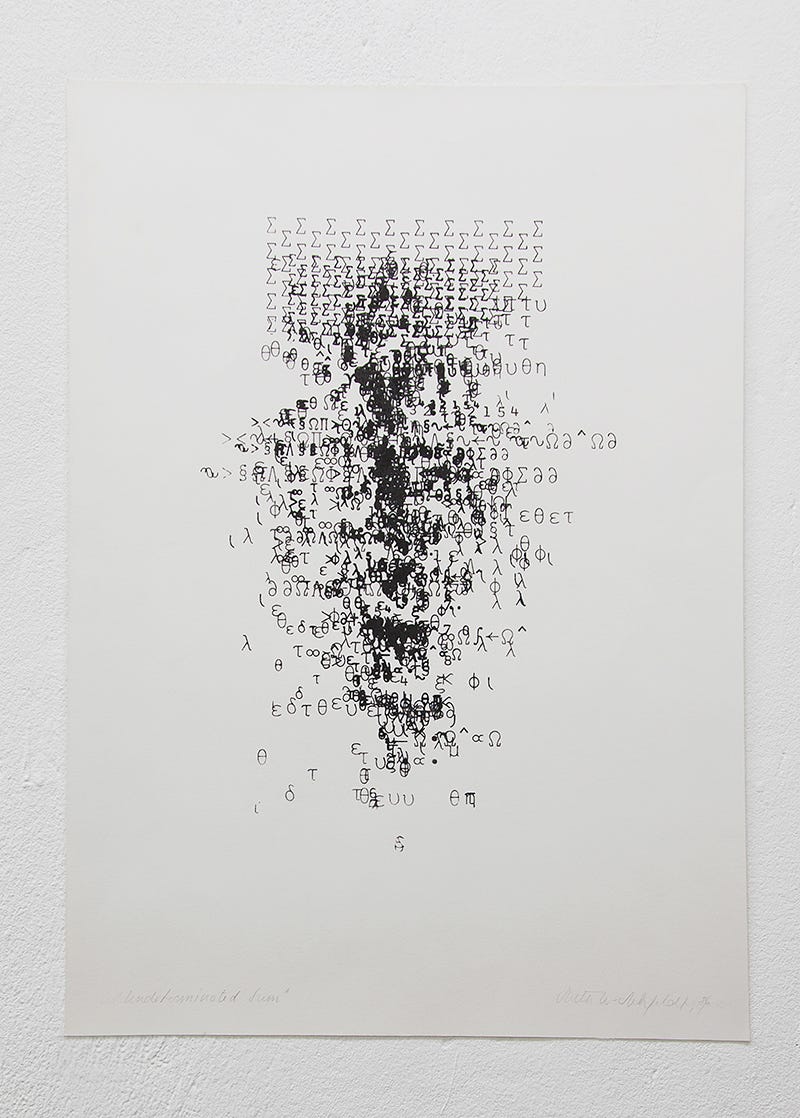
Art & Science
A final set of definitions of the subject might be as follows:
“The science and art of understanding” (HUMBERTO MATURANA)
"The art of creating and maintaining equilibrium in a world of constraints and possibilities" (ERNST VON GLASERFELD)
“The art and science of manipulating defensible metaphors” (GORDON PASK)
“The science and art of the understanding of understanding” (RODNEY E. DONALDSON)
“A way of thinking about ways of thinking” (LARRY RICHARDS)
This set of definitions of the subject, more open in character, demonstrates a more philosophical, dialogic and open-ended position with regard to cybernetics, in contrast to the more rigorous and scientific definitions mentioned above. These ways of understanding leave more room to account for the full diversity that the subject truly encompasses, and are more in line with the discursive and creative mentality towards cybernetics we advocate. While most of these practitioners were scientists whose work continued to draw enormously from the sciences, they frame cybernetics more as an art, a way of thinking and communicating than science alone. Glaserfeld, when asked whether his definition should be supplemented with an acknowledgement of science, retorted:6
“you want to put science into it, I don’t… because science is essentially built on causal relationships, and causal relationships are not important in cybernetics.” (Glaserfeld)
These diverse ways of delineating the meaning of cybernetics leave room for others to utilise the subject and direct it towards their own ends, in particular philosophers, artists and creators of various kinds, or organisers who might want to extrapolate the lessons of cybernetics and apply them to more self-managing, participatory and accessible contexts. These definitions are consequentially more in line with our interests in the subject (democratic practitioners being the group c/cyb most directly aspires to contribute to).



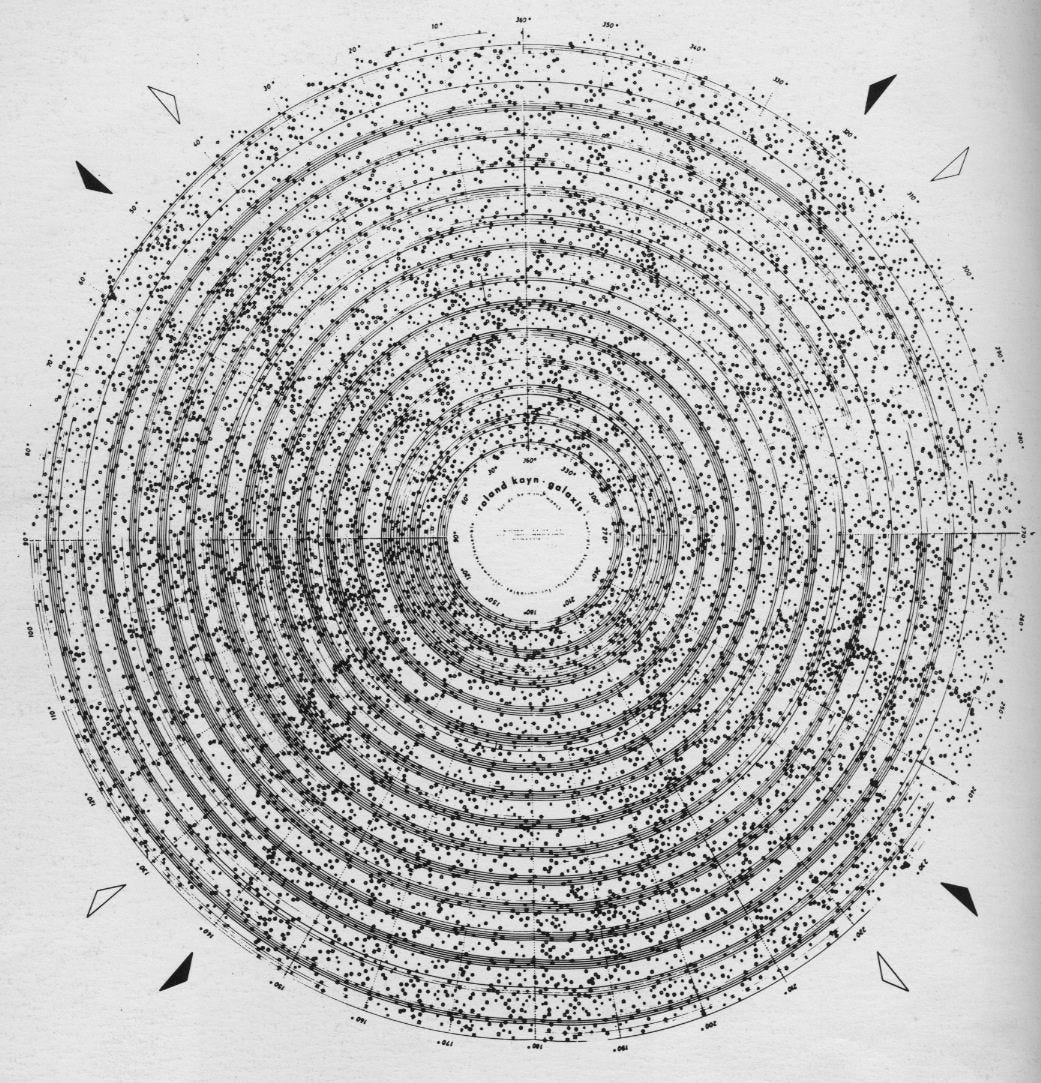
Cybernetics in c/cyb
Despite the multidimensional and discursive understanding of cybernetics we advocate, in terms of c/cyb as a cybernetic project, one definition takes precedence over all others:
Beer’s work sought to apply cybernetics specifically to social organisational contexts and argued that for systems to become and remain viable far more democratic and autonomous ways of organising require construction. Despite the general relevance of Beer’s definition to establishing a common cybernetics, I would amend his definition in several respects to more closely reflect the ends towards which c/cyb seeks to direct the subject. I have argued previously that cybernetics is best understood as a wide-ranging discourse as opposed to science alone (though the addition of ‘art’ to some of the above definitions serves the same purpose of lessening the reductiveness which is implied in the more conventional scientific definitions mentioned above). Second, the prefix ‘the’ on all but one of the above definitions should give us pause for thought (as I mentioned here). Instead, the non-exclusive ‘a’ seems more appropriate for a trans-disciplinary discourse which need not claim monopoly or priority over the domains of knowledge it contributes to. With these alterations in mind, I would prefer to define cybernetics as ‘a discourse of effective organisation’, or alternatively ‘an art and science of effective organisation’; though these definitions merely better define the position taken up in c/cyb in particular. The most appropriate way of understanding cybernetics is, in the end, dependent on the project towards which it is directed.
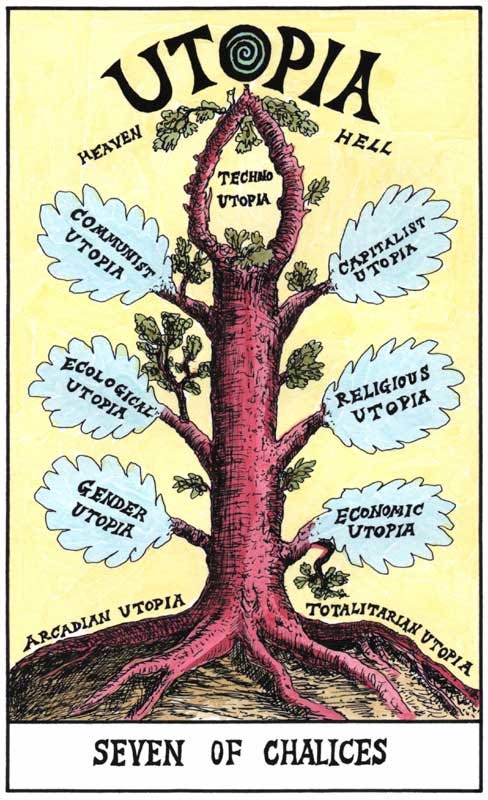
It should go without saying these comments on a range of briefly put definitions do not substitute taking the time to absorb the perspectives and viewpoints of some of the subject’s key authors in detail, and a short article such as this should be read with a view of it leading to further research and exploration.
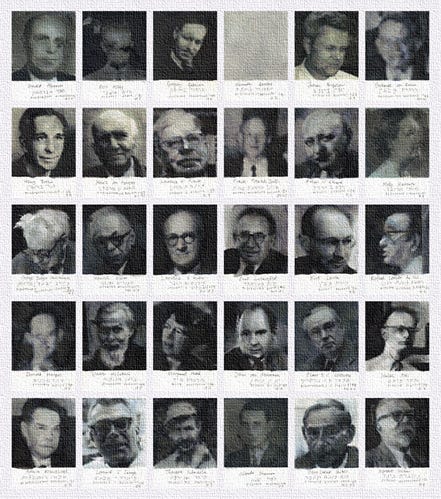
While The Macy Conferences are generally considered to be the birthplace of cybernetics understood as a (trans-)discipline in its own right, many draw the origin of the ideas upon which it relies back to Alexander Bogdanov’s Tektology (from which this blog gets its name), while others trace it back far further, though in less explicit terms.
To complicate this basic understanding of cybernetics as invariance, following the work of Pickering, there is another way of understanding cybernetics not as the study of commonality but as concerned with the production of contextually embedded systems through a performative ontology. This alternative understanding is discussed in my forthcoming thesis and might come up in later articles, but for the sake of brevity, I won’t elaborate on it further during this brief introductory article.
For further information on these and just about any other concept from cybernetics, systems theory, information theory and everything in between, Systemspedia is an excellent resource for accessing quick and well-cited summaries and definitions of related concepts.
It should be emphasised, however, that second-order cybernetics does not only concern specifically social systems, although that was the context in which its necessity became most obvious. Experts in other disciplines, such as the prominent biologists Humberto Maturana and Francisco Verela, were influential cyberneticians in the second-order tradition.
Salvaggio, writing about Pedretti, notes the progression into second-order cybernetics with the corollary drift of cybernetics away from the scientific consensus, and towards more “kooky” domains:
“Cybernetics, through its second wave, saw that system dynamics included the observer. Looking out at a system while ignoring yourself within it was impossible. Who were you, and what did that mean to the system you were trying to understand?
That line of thought marked an increasing disregard for cybernetics in the "objective" sciences. This idea of position, territory, and subjectivity in the sciences was ahead of its time. Scientific publishing norms still struggle to understand the limits of objectivity. In artificial intelligence circles, the idea that race influences data is somehow still controversial. The idea that race influences the processing of data by “objective machines” remains even more so.
Part of the ostracism of cybernetics was linguistic. If everything is a system, she wrote, the term becomes meaningless. The answer of second wave cybernetics was "you draw your own boundary, and it reflects your place within it." That didn't fit the objectivity regime.
A systems consultant can't come in and tell you they will look at “everything.” There’s not enough language within “scientific consensus” to do that kind of work. Understanding systems through cybernetics shifted its “objective” posture of the first wave to a self-aware posture in its second. It moved from providing answers to providing questions that challenged answers.” (Salvaggio)
Another example of the extra-scientificity of cybernetics can be gathered from Heinz von Foerster, who argued that a distinction should be made between the sciences and what he called systemics:
““science”, or “sciencia” in Latin, has been amazingly successful in the 2000 years since Aristotle. And what does “sciencia” derive from? The indo-european word for “sciencia” is “scy”, and that is found in “science” and “sciencia” and in “schizophrenia”, and in “schism”, that is the word meaning “to separate”. And so “systemics” is a parallel development, only it’s the exact opposite of “science”, for it integrates. When you think about it today, all this systems theory and systems research which crops up in both art and science, I wouldn’t call that “science” anymore, I would call that “systemics”. Today’s science has moved on to an approach that sees things together: “systemics”. So, I would see the steps taken today as being from science to systemics.” (von Foerster)

